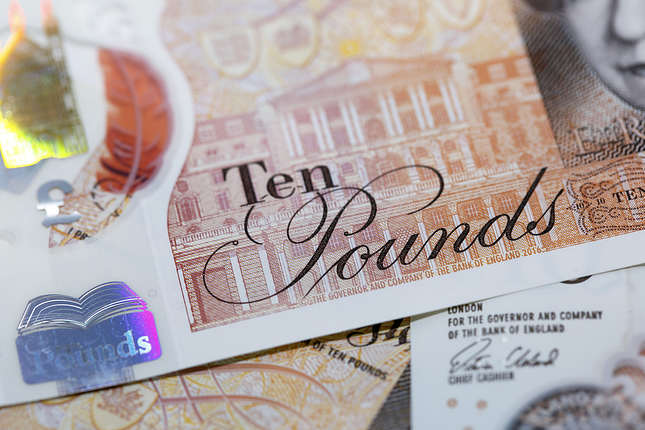- February PMI at 60.8 was the highest since August 2018.
- March PMI forecast of 61.3 would be the highest since May 2004.
- Consumer optimism was unexpectedly strong in March.
- Markets have been keyed to improving US statistics.
Managers in the manufacturing sector have rarely been as optimistic as they are now.
The Purchasing Managers’ Index (PMI) from the Institute for Supply Management (ISM) is forecast to rise to 61.3 in March from 60.8 in February. The Employment Index is expected to slip to 53 from 54.4 in February and the prices Paid Index should fade to 85 from 86. The crucial New Orders Index was 64.8 in February.
Manufacturing PMI, which polls the business outlook of the sector’s managers, has only been as positive three times in the last forty years: in 2005 for two months, in 1987 for one month and in 1983 and 1984 for seven months.
Manufacturing PMI
Source: Retuers
Manufacturing PMI
Manufacturing optimism is simple to fathom, incoming business is setting records.
The New Orders Index averaged 64.25 for the eight months from July to February. This is the highest this gauge has been in 16 years, since the second and third quarters of 2004.
In fact, there has only been one other run of orders as extensive as this in the past four decades and that was during the Reagan boom in 1983 and 1984.
New Orders Index
Source: Reuters
The $1400 stimulus payment that arrived for most families in March is likely to produce another consumption boom like the 7.6% burst in Retail Sales from the January $600 stipend.
The lockdowns and the induced recession of the past year delayed or blocked many consumer business purchases.Their rebound is the source of the exceptional order flow of the last eight months. Manufacturing firms may also be having a more difficult time sourcing parts and raw materials, lengthening production times and order completion..
Nonetheless, the result has been a sustained manufacturing boom the likes of which has not been seen since the 1980s. .
Factory employment has been the rub. The recovery of the Employment Index has only reached 54.4 in February, despite the optimism in the overall index.
This is far below the excellent labor market of 2017, 2018 and 2019. A time of rising wages and low unemployment for American workers as good as any since 1980.
Consumer Confidence
Confidence among US consumers soared in March.
The burgeoning vaccination program coupled with a reviving labor market, the promise of stimulus payments and a government spending binge, have brought consumer optimism to its highest levels since the pandemic advent last winter.
The Conference Board March Consumer Confidence index rose sharply to 109.7 from 91.3 in February far outstripping the 96.9 forecast. Sentiment is now about half-way between the February 2020 score of 132.6 and the April panic low of 85.7.
Conference Board Consumer Confidence
Source: Reuters
Separate indexes for the Present Situation and Expectations also jumped in March, to 110.0 from 89.6 and to 109.6 from 90.9.
The Michigan Consumer Sentiment Survey reached 84.9 in March, its highest score in a year, from 76.8 prior, easily surpassing the 78.5 forecast. This index is also about half-way between its February 2020 reading of 101 and the April low at 71.8.
The unexpected strength in both consumer indexes is most likely due to a revival of labor market.
Consumer confidence and employment
The most important ingredient in consumer confidence is employment.
The greatly improved outlook for most Americans in March is not explicable without a recovery in the jobs market. .
Nonfarm Payrolls are expected to add 639,000 jobs in March which would be the highest total since October’s 680,000.
Nonfarm Payrolls
Source: FXStreet
Automatic Data Processing (ADP) saw 517,000 new workers in March, slightly less than the 550,000 forecast but the February total was revised higher by 59,000 to 176,000.
Conclusion and markets
The optimism of manufacturing executives is based on reality and logic.
Orders have poured into factories for more than six months. Consumer optimism is returning with employment and consumption backed by government subsidies, the boom should continue until the end of the year.
Treasury interest rates and comparative economics with Europe and Japan have kept the US dollar and equities buoyant this year.
If the manufacturing outlook rises, especially if the Employment Index jumps, markets will have the confirmation they need for further advances.
Information on these pages contains forward-looking statements that involve risks and uncertainties. Markets and instruments profiled on this page are for informational purposes only and should not in any way come across as a recommendation to buy or sell in these assets. You should do your own thorough research before making any investment decisions. FXStreet does not in any way guarantee that this information is free from mistakes, errors, or material misstatements. It also does not guarantee that this information is of a timely nature. Investing in Open Markets involves a great deal of risk, including the loss of all or a portion of your investment, as well as emotional distress. All risks, losses and costs associated with investing, including total loss of principal, are your responsibility. The views and opinions expressed in this article are those of the authors and do not necessarily reflect the official policy or position of FXStreet nor its advertisers. The author will not be held responsible for information that is found at the end of links posted on this page.
If not otherwise explicitly mentioned in the body of the article, at the time of writing, the author has no position in any stock mentioned in this article and no business relationship with any company mentioned. The author has not received compensation for writing this article, other than from FXStreet.
FXStreet and the author do not provide personalized recommendations. The author makes no representations as to the accuracy, completeness, or suitability of this information. FXStreet and the author will not be liable for any errors, omissions or any losses, injuries or damages arising from this information and its display or use. Errors and omissions excepted.
The author and FXStreet are not registered investment advisors and nothing in this article is intended to be investment advice.
Recommended Content
Editors’ Picks

EUR/USD weakens to near 1.0350 on Fed hawkish cut, stronger US data
The EUR/USD pair trades with a mild negative bias around 1.0360 during the early Asian session on Friday. The major pair remains on the defensive as the US Federal Reserve adopted a less dovish stance despite cutting interest rates by 25 basis points at its December meeting on Wednesday.

GBP/USD extends slide approaches 1.2500 after BoE rate decision
GBP/USD stays on the back foot and break lower, nearing 1.2500 after the Bank of England (BoE) monetary policy decisions. The BoE maintained the bank rate at 4.75% as expected, but the accompanying statement leaned to dovish, while three out of nine MPC members opted for a cut.

Gold approaches recent lows around $2,580
Gold resumes its decline after the early advance and trades below $2,600 early in the American session. Stronger than anticipated US data and recent central banks' outcomes fuel demand for the US Dollar. XAU/USD nears its weekly low at $2,582.93.

Bitcoin slightly recovers after sharp sell-off following Fed rate cut decision
Bitcoin (BTC) recovers slightly, trading around $102,000 on Thursday after dropping 5.5% the previous day. Whales, corporations, and institutional investors saw an opportunity to take advantage of the recent dips and added more BTC to their holdings.

Bank of England stays on hold, but a dovish front is building
Bank of England rates were maintained at 4.75% today, in line with expectations. However, the 6-3 vote split sent a moderately dovish signal to markets, prompting some dovish repricing and a weaker pound. We remain more dovish than market pricing for 2025.

Best Forex Brokers with Low Spreads
VERIFIED Low spreads are crucial for reducing trading costs. Explore top Forex brokers offering competitive spreads and high leverage. Compare options for EUR/USD, GBP/USD, USD/JPY, and Gold.
